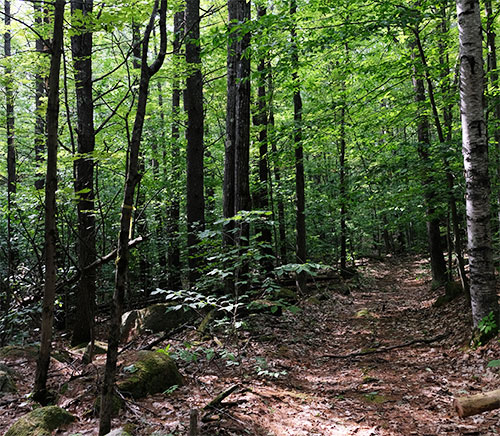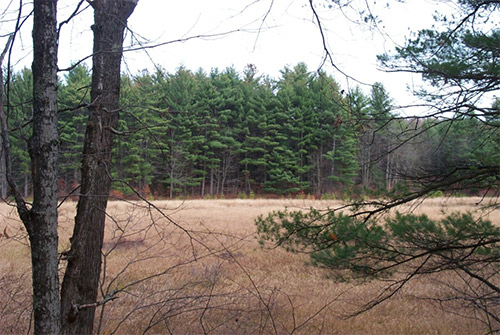
131 acres of forest and streams
Public access, no formal trails
November 2021
The Koerber Family Forest contributes to a large block of approximately 650 acres of conserved land nearby, including the Stone Farm and the Farley property, which were conserved by Five Rivers in 2017 and 2013, respectively. In addition to protecting three headwater streams and providing important wildlife habitat, conserving the land creates opportunities for future pedestrian trails and use as an outdoor classroom for the neighboring Dunbarton Elementary School.
“I am thrilled that this land will remain a farm in perpetuity for the public to enjoy, and that wildlife will have a secure home here, thanks to Five Rivers and their many generous donors,” said Ken Koerber. Ken and his wife, Susan, raised their three children on the land, and the couple owns and operates Chanticleer Gardens, dedicated to producing organically-grown cut flowers for local florists and retailers.
“The Koerber’s farm is located right in the center of Dunbarton and preserving it as open space is crucial in maintaining the rural character of our town,” said Brett St. Clair, chair of the Dunbarton Conservation Commission.
Conservation of the Koerber Family Forest is the culmination of a multi-year effort by Five Rivers to raise the necessary funds and finalize the purchase of the conservation easement, after the Koerbers’ initial offer to donate half of the value of the easement. The project was made possible by several critical state and community funding partners, including New Hampshire’s Land & Community Heritage Investment Program (LCHIP), which awarded a $100,000 grant to the project; the Dunbarton Conservation Commission; the Merrimack Conservation Partnership; the New Hampshire State Conservation Commission “Moose Plate” Conservation Grant Program; the New Hampshire Drinking Water and Groundwater Trust Fund Grant; as well as over $19,000 in private donations.


 Stone Road
Stone Road Grapevine and Guinea Roads
Grapevine and Guinea Roads Black Brook Road at the Goffstown town line
Black Brook Road at the Goffstown town line
